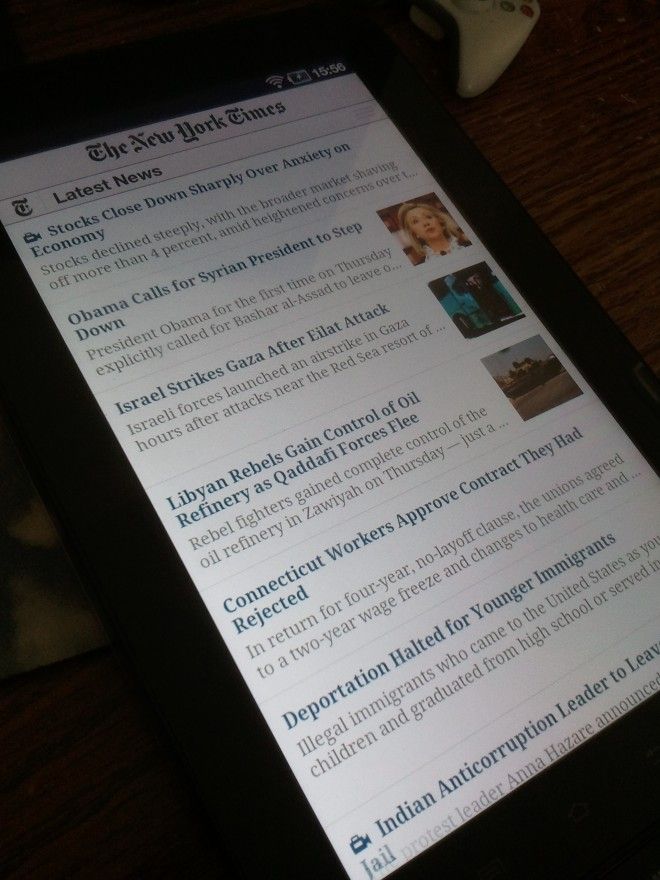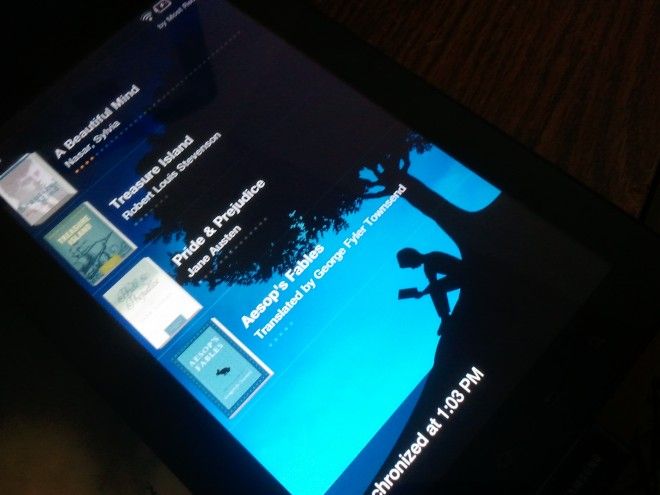
Tablets, tablets, tablets! We live in a renaissance age for slate computers, ushered in by Apple’s iPad and followed up by… well, miles and miles of desolate wasteland. The New York Times recently did a study amongst current and potential tablet owners with nearly 95% of respondents hopping excited to own an iPad. The next closest option, the HP TouchPad, held out at a mere 10%. But why is there such a disparity, even when Android trounces Apple in smartphone marketshare? The answer is plainly obvious with Samsung’s original 7″ Galaxy Tab, a lazily-upscaled version of their original, and crazy popular, Galaxy S phones.
 Software
Software
As an Android/Galaxy S owner, it was super easy to set up the Galaxy Tab. The tablet was released right as their phone was spreading across the carriers, largely as a response to the iPad. Running vanilla Android (Froyo, if you must know) with Samsung’s TouchWiz “skin”, it feels very familiar, but honestly, a throwback. It literally felt like my phone, but on a 7″ screen instead of a 4″ one. There are some quirks in the presentation between the two devices, though:
- While the S sports a DroidSans typeface as standard, the Tab uses Helvetica, the same used on the iOS. Given that Apple is currently suing the bejeezus out of Samsung for ripping virtually every design cue from them, would it have hurt to just put another font on there? That issue aside, Helvetica is also a far more generic typeface for what’s supposed to be a cutting edge device, making the whole venture feel far more like a boring upgrade than a genuinely exciting standalone device.
- The dedicated home screen buttons are give and take. On the S, there are four (including the obligatory Applications button), but they’re permanent residents. On the Tab, there are three (including the obligatory…) and two are customizable. The only problem is that the visual real estate could handle five, but for some bizarre reason, they decided against it, leaving you with less dedicated options across your home screens. And, of course, there’s absolutely nothing filling those spots anyway to compensate for it. Why, Samsung, Why?!
- Most Android phones use the “middle” page as the starting home screen, but this one oddly decides to use the first page as a starting point, meaning if you utilize a lot of widgets, you don’t have an easy ‘left’ page to access. It sounds like a strange complaint, but having less accessibility from the get go is never a plus.
- The larger screen gives you an extra column to put icons/widgets/whatever in, but virtually all Android app widgets are optimized for 4-wide spaces, not 5. On top of that many assets, like the new Android Market, sprawl off the screen on the tablet.
 The Tab also utilizes a ‘black on white’ theme, that’s probably in place to hide much of the backlight bleed common on TFT LCD displays (more on that in a bit). But you also can’t change it to the ‘white on black’ theme common to the phone version, so be prepared to look at a lot of bright fields, (unless you crank down the brightness, natch).
The Tab also utilizes a ‘black on white’ theme, that’s probably in place to hide much of the backlight bleed common on TFT LCD displays (more on that in a bit). But you also can’t change it to the ‘white on black’ theme common to the phone version, so be prepared to look at a lot of bright fields, (unless you crank down the brightness, natch).

The larger screen also allows for some interesting applications, but not many. This thing was obviously marketed as an e-reader killer, so it comes bundled with Amazon Kindle, Wall Street Journal, and New York Times apps from the get-go. Maps also works much better with a larger screen as well. In my case, reading mostly as I’m falling asleep, I found it uncomfortable to have to crane my head to read the page instead of just turning my eyes. On the flip side, there’s something really cool about being to manipulate the tablet while it resides on the corner of your desk, rather than pulling it up to your face.








Don't Keep This a
Secret, Share It